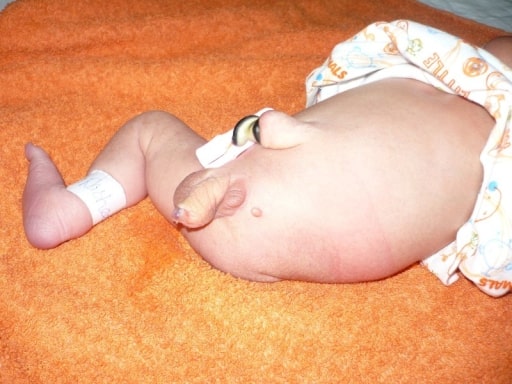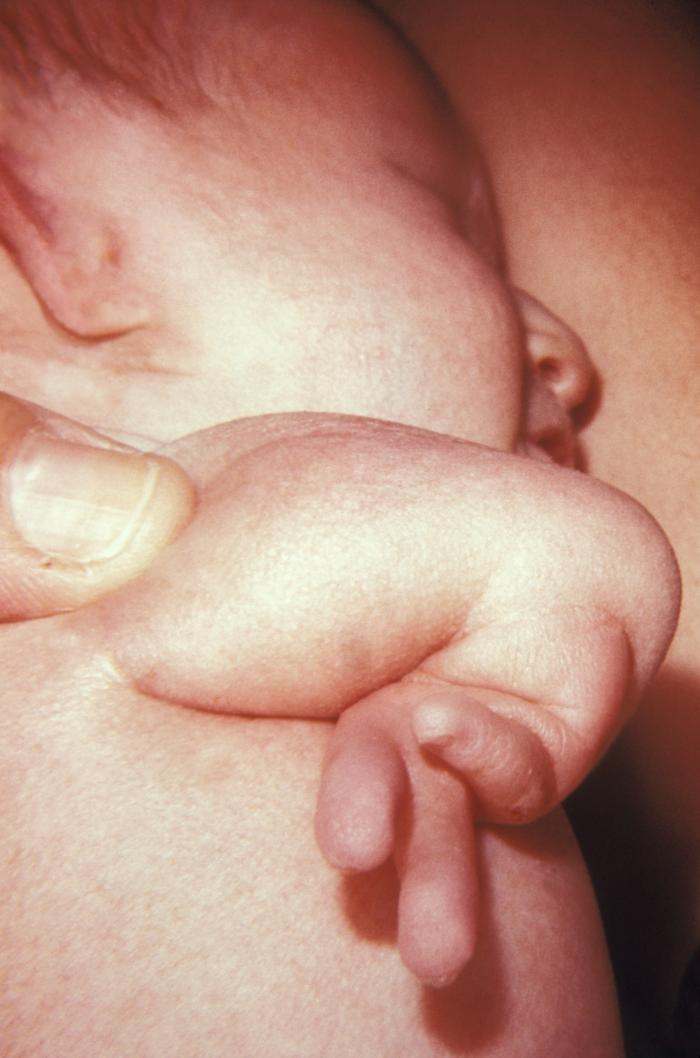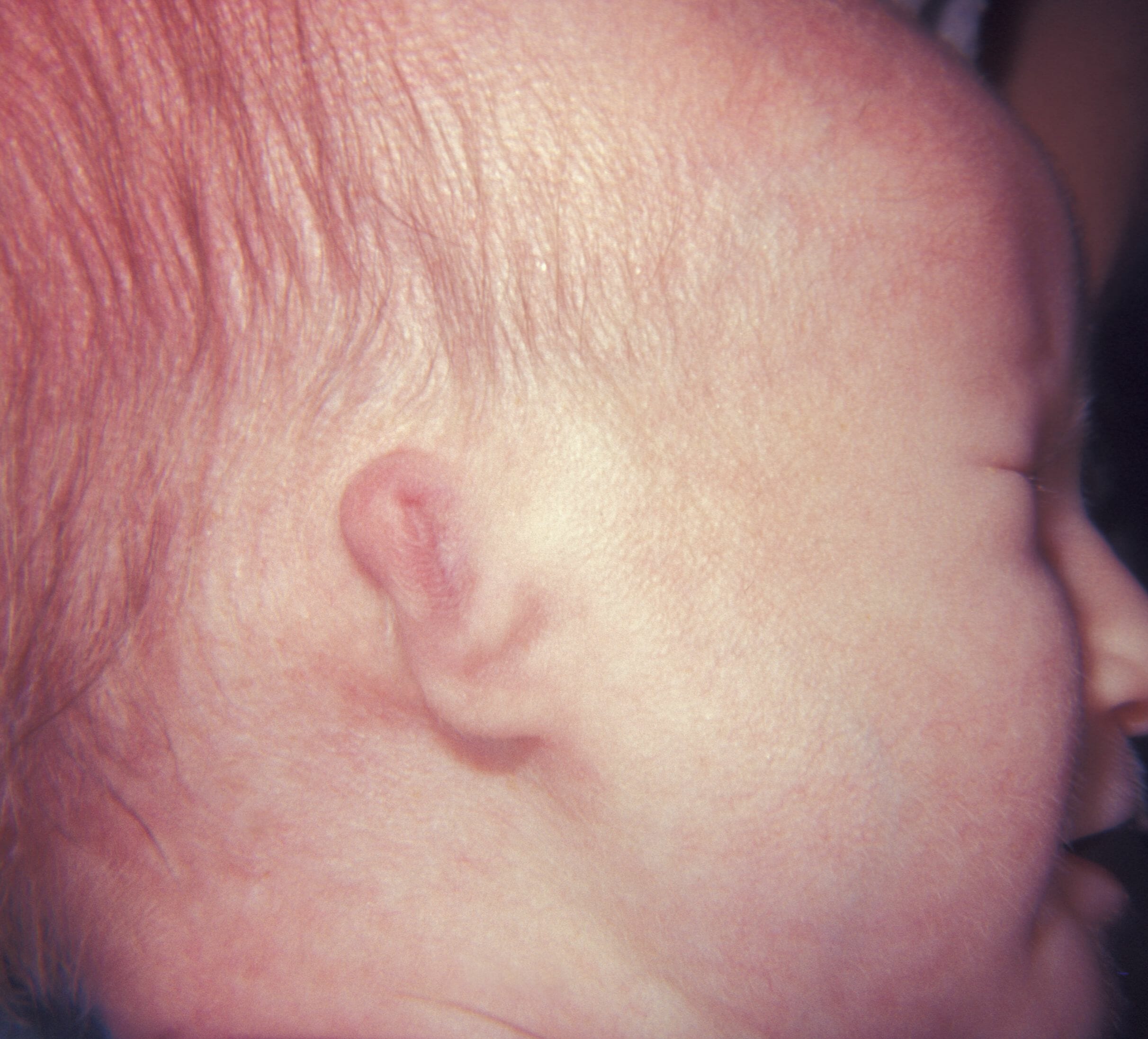VACTERL association is a rare disorder that affects multiple body systems in fetal development. While numerous genetic factors contribute to the development of this disorder, there is no single clear genetic cause or inheritance pattern. The acronym VACTERL stands for the anomalies by which this condition is characterized: Vertebral abnormalities, Anal atresia Atresia Hypoplastic Left Heart Syndrome (HLHS), Cardiac defects, Tracheoesophageal abnormalities, Renal anomalies, and Limb abnormalities. Cognition is not affected. The diagnosis is one of exclusion in the presence of at least 3 of the above clinical features. Treatment is based on symptoms and abnormalities present.
Last updated: Dec 1, 2025
The acronym VACTERL describes the clinical manifestations of the condition.

Child born with a severe form of VACTERL
Image: “Figure 1” by Department of Pediatric Surgery, The Children’s Hospital and the Institute of Child Health Lahore, Pakistan. License: CC BY 3.0
A newborn with radial atresia of the right arm: This birth deformation is a VACTERL association disorder.
Image: “Radial atresia” by CDC/Dr. James W. Hanson. License: Public Domain
Infant with an atretic ear seen in association with VACTERL PD
Image: “Ear-VACTERL” by CDC/Dr. James W. Hanson. License: Public DomainVACTERL is a diagnosis of exclusion. All other possible conditions should be evaluated and ruled out.
Multiple syndromes have clinical features overlapping with VACTERL association. The presence of anomalies not characteristic of VACTERL association, in combination with genetic testing Genetic Testing Detection of a mutation; genotype; karyotype; or specific alleles associated with genetic traits, heritable diseases, or predisposition to a disease, or that may lead to the disease in descendants. It includes prenatal genetic testing. Myotonic Dystrophies, can help differentiate most of these syndromes. The following is a selection Selection Lymphocyte activation by a specific antigen thus triggering clonal expansion of lymphocytes already capable of mounting an immune response to the antigen. B cells: Types and Functions of the most important differential diagnoses: